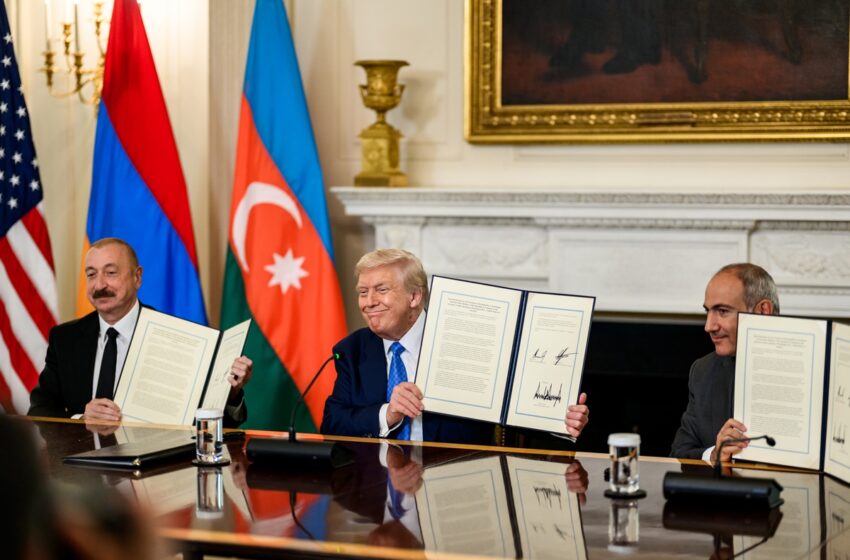Azerbaijan and Armenia peace deal: What it means for the South Caucasus

Trump with Aliyev and Pashinyan during the White House peace accord signing. Credit: The White House
In a landmark moment for South Caucasus diplomacy, Azerbaijan and Armenia have signed a U.S.-brokered peace agreement aimed at ending decades of hostility. The deal was formalized on August 8, 2025, at the White House, where President Donald Trump welcomed Azerbaijani President Ilham Aliyev and Armenian Prime Minister Nikol Pashinyan. Both leaders committed to halting all hostilities, recognizing each other’s territorial integrity, and restoring diplomatic and economic ties after years of intermittent conflict.
At the heart of the agreement is a strategic infrastructure plan known as the Trump Route for International Peace and Prosperity (TRIPP), a transit corridor that will link Azerbaijan to its Nakhchivan exclave through southern Armenia. Under the deal, Armenia has leased the corridor to the United States for 99 years, granting exclusive development rights to build roads, railways, pipelines, and digital infrastructure. U.S. officials say the project will not only transform trade and connectivity between the two nations but also open new routes for global commerce through the region.
The signing also represents a significant geopolitical shift. For decades, Russia has held sway in the South Caucasus, often mediating, or freezing, conflicts between the two states. This time, Moscow was left out of negotiations entirely. While Turkey has welcomed the agreement, Iran has offered cautious support, warning against what it calls destabilizing foreign interference. The deal underscores Washington’s growing influence in the region, positioning the U.S. as a central broker in South Caucasus stability.
READ ALSO
Habeas Corpus: How Trump’s least favourite part of the Constitution got deleted
What is the Presidential Fitness Test? Inside Trump’s new executive order
Still, the path to lasting peace is not without obstacles. Azerbaijan has made it clear that a final settlement depends on Armenia amending its constitution to remove references to Nagorno-Karabakh, a disputed region at the heart of previous wars. Armenian officials have said such changes would require a national referendum, likely to be scheduled ahead of the 2026 elections. There are also unresolved questions over how the TRIPP corridor will be secured, policed, and integrated into Armenian territory without undermining its sovereignty.
Human rights advocates have voiced concern over the absence of measures addressing the plight of displaced people and war-affected communities. Critics argue that without provisions for justice, reconciliation, and political reform, the peace deal risks becoming an economic arrangement that ignores deeper grievances.
Nevertheless, the agreement has the potential to unlock a new era of economic integration and regional cooperation. If implemented as planned, the TRIPP corridor could become a lifeline for trade, linking Central Asia and the Middle East to European markets while boosting U.S. strategic interests. For Armenia and Azerbaijan, the deal offers a rare chance to turn decades of rivalry into a foundation for shared prosperity, provided both sides can navigate the legal, political, and security challenges ahead.

